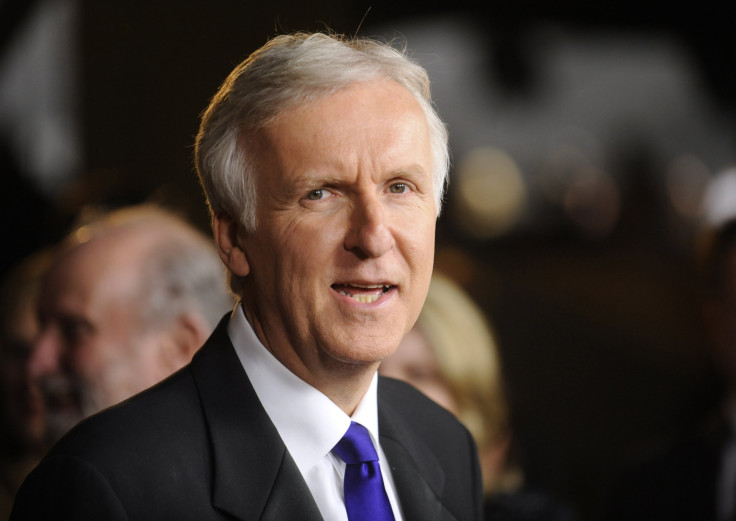'Avatar 2' Budget: How James Cameron Plans To Lower Cost And Increase Technology Influence

James Cameron is hard at work making the three-movie follow-up to his massively successful 2009 hit “Avatar.” While speaking at a recent Wall Street Journal conference, the 60-year-old director teased a few details about what fans can expect from the upcoming films.
Cameron is considered by many to be the master of the American blockbuster. The first “Avatar” film grossed more than $2.7 billion worldwide, beating the previous record held by “Titanic,” another of Cameron’s directorial successes. A large part of “Avatar’s” popularity had to do with the revolutionary technology with which it was shot. The Academy Award-winning director was among the first to adopt 3D filming. Through the use of special cameras designed to shoot in 3D, the director could add a level of depth to his film that had never really been done before. While he admits that the new films won't utilize any game-changing technology like their predecessor, Cameron is still not done innovating filmmaking.
According to The Wall Street Journal, the director is ramping up his use of virtual reality for the upcoming films.
"VR is nothing new, it's been around for a long time," he told the audience at the WSJD Conference in Laguna Beach Calif. "The thing that people never quite got about 'Avatar' 1, and our upcoming films, is that we work in a VR environment. That's how we work. We call it 'virtual production,' but there's really no difference. We're in a synthetic reality that surrounds us. The actors, and their characters, are sort of taken in real time into that environment."
"In the moment that we're shooting, I'm seeing their characters in a virtual world and I'm moving and navigating through that world," he continued. "I use a handheld virtual camera. We live eat and breathe virtual reality all day long in our 'Avatar' production world."
The director revealed that he's also bringing special effects experts into the script-writing process more so than he has in the past. Overall he seems to be placing his usual enthusiasm for cool tech toys into the directorial process rather than directly on camera like he did with 3D in the first film.
”It was very revolutionary this time in terms of the way in which virtual production and performance capture were integrated into a new production system. So, it’s really more of what the viewer will experience in terms of the world, new cultures, new creatures new environments - that sort of thing,” he said. “We have to have a world that continues to refresh itself and be rich and unexpected.”
According to The Hollywood Reporter, Cameron went on to discuss this new production system saying that filming a movie like this is not what the average person would imagine it to be.
“Interestingly, the term ‘filming’ is so obsolete in almost every regard because we do some image capture where there’s actual photograph, but it’s done entirely on digital cameras,” he said. “And that only represents a small part, maybe 20 to 25 percent, of the total film. The rest is completely synthetically generated.”
With three films ahead of him, naturally the topic of budget came up almost immediately. The interview's moderator got the ball rolling by asking Cameron a question on behalf of 21st Century Fox Chairman Rupert Murdoch. Earlier in the conference, the 83-year-old businessman jokingly told attendees to take whatever number Cameron gives for the budget and double it. While the first “Avatar” made a record-breaking amount of money, it's also known for spending a record-breaking amount of money. A Vanity Fair analysis from 2009 estimates the total cost of the film at more than $230 million.
“Obviously they’re expensive films,” the director said with a laugh and a nod to Murdoch, who was sitting in the room. “The point of making three together, as a sort of conjoined production, is to enjoy the economics of scale. We’ll literally capture the actors all at the same time, we’ll do all the live photography all at the same time, it’s sort of like we’re shooting a miniseries.”
While Cameron believes that doing the movies on a larger scale, all at once, will help efficiency and cut costs, odds are good that he's still staring down he barrel of one of the biggest-budget film franchises ever. The first film had one of the highest budgets Hollywood has to offer and used it to deliver a hit. Now, the filmmaker has painted himself into a corner that he might have to spend his way out of in order to meet audience expectation.
"It is not inconceivable that the eventual value of the three sequels could run close to $1 billion, given that the projected budget for 'Avatar 2' is already suspected to be in the region of $250 million," Yahoo Movies notes.
By comparison, Peter Jackson's "The Hobbit" trilogy, which premieres its final installment on Dec. 17, 2014, totaled a budget of $745 million. This was due, in large part, to Jackson's decision to run the film in 3D and shoot it at 48 frames per second - a technique that Cameron is debating using himself, according to Tech Radar.
However, Cameron doesn't necessarily have to match "The Hobbit." Successful blockbuster trilogies have been accomplished on smaller budgets. For example, Jackson's "The Lord of the Rings" trilogy only cost $297 million in total. "The Pirates of the Caribbean" trilogy was a bit pricier at $665 million, with an estimated $300 million going into the final film alone. However, neither trilogy was made with the same level of technological ambition that Cameron tends to bring to his films - so anything could happen.
The first sequel to the "Avatar" is set for a Dec. 2016 release. Each subsequent movie is scheduled for the same month in 2017 and 2018.
© Copyright IBTimes 2024. All rights reserved.






















